So I purchased a mini-box picoPSU-120 kit which is in essence a very very small power supply that provides multiple regulated voltages. I want to power my Commodore Amiga 500 with the tiny power supply but there’s potentially a big problem with using it out of the box: the -12v rail seems to be out of spec. It’s not being properly regulated to -12v.
I have no problems with the +5v rail or the +12v rail, both measure around +/-1%, or +/-4%, respectively. I haven’t even looked at the +3.3v rail, because the Amiga doesn’t need it.
With their critical specs being outlined here
I wasn’t a math major, but I think this means that the voltages should be between -11.4v and -12.6v. And remember, with load regulation, even without a load, the voltage should be within this range.
But, alas, it’s not:
So I’m getting -13.8v on the -12v rail, which is a solid 15% off target.
Since the PicoPSU is actually a DC->DC converter, it requires 12v input, but I bought their kit, so they are also providing the normal AC to 12v DC conversion with an EDACPOWER ELEC Model EA11203A. The output of this measures +12.49v which is within the the +/- 5% specified on their spec sheet. So this means that the input is ok. And given that it’s unloaded, the voltage sitting high(er) doesn’t concern me at all.
The ATX Specification states that the regulation can be +/- 10% for the -12v rail is allowed, but on the high(low?) side this is still -13.20v. (Section 3.2.1 DC Voltage Regulation (which is a required section) Table 5.)
I double-checked every measurement with another multimeter to ensure that I’m getting decent numbers.
Some others have mentioned that there’s a few things I can do to solve the problem:
- Use voltage regulation,
likely with a 7912, which would handle the negative rail, but I’d have to be sure to get a LDO one. I ordered an LM2990T-12 today. - Use two diodes in series for a 1.2v to 1.4v drop. There’s low currents involved on this rail, perhaps 20 or 25ma. So my voltage drop would likely be 1.2v, which would take me from -13.8v to -12.6v. Much more palatable 5% difference
- Try testing the Amiga at -13.8v by slowing deviating from -12v using my lab bench supply, the Rigol DP832.
In any event, I wish this would have just worked out of the box.
Perhaps it’s me? Perhaps I’m doing something wrong? What do you think?


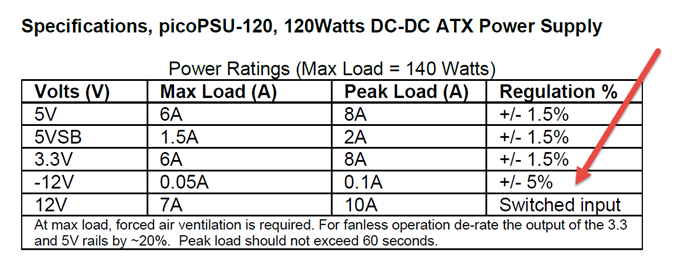
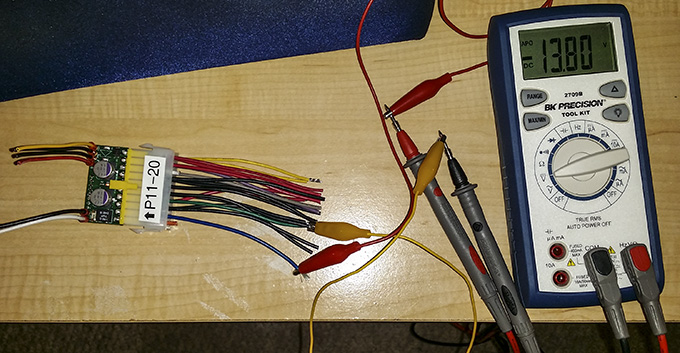
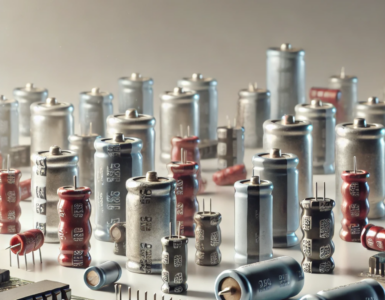
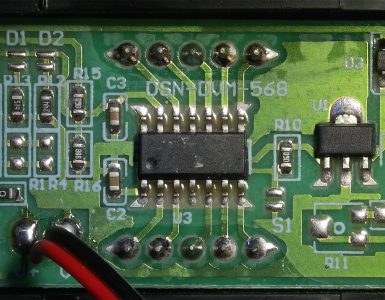
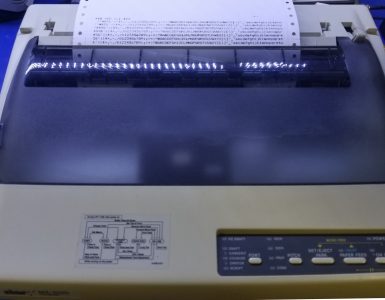










So support got back to me after about a week or so and basically let me know the -12v rail is unregulated despite the chart in the manual.
I got one of those negative voltage regulators in and I think they will do the job. But the -12v rail is Crap. I think it support the required draw and maintain the voltage but we’ll see.
The voltage regulator is pretty sweet and I tested with my bench supply. Performs as expected.
I’ll follow up with how this works when I’m drawing higher currents.
Hi.
The tests I have done with an A600 shows the Amiga runs fine without any -12v current provided.
I think the -12v is required for disk operation and I have no mechanical drives what so ever. My WB is loaded from a SD card.
Don’t know the A600 like I do the A500 so maybe this doesn’t hold.
Regular floppies take +5v and +12v. Newer floppies take just the +5v.
The -12v was specifically for two things: the full voltage swing of the RS232 port and the audio drivers. Full voltage swing is required for spec, but depending on what you’re interfacing with it may not matter. Likely not.
Did you check your audio?
Best thing would be to check the schematics. It should be pretty obvious what it drives.
EDIT: Fwiw, the designers would never have included support for another unnecessary power rail and a more complex power supply unless it was really needed. Unless there were cost-related mitigating reasons. Like they had older A500 power supplies already produced or something.